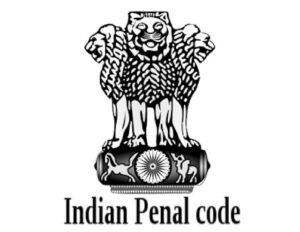Introduction to Sedition Law in India and The Difference Between IPC 1860 vs BNS 2023
Written by Mr Aditya Kumar
Table of Contents
- Historical Roots
- Sedition Law under Indian Penal Code 1860
- Ingredients
- Sedition Law under Bhartiya Nyaya Sanhita, 2023
- Comparative Analysis with IPC Section 124A:
- The Dark Side of Connectivity: How Technology Fuels the Spread of Seditious Content
- Leading Case Law and Landmark Judgement on Sedition Law
- The Effect of Sedition Law on Journalism, Activism, and Dissent in India
- Journalism
- Activism
- Dissent
- The Future of Sedition Law in India: Ongoing Legal Challenges to Its Constitutionality
- Conclusion
- Citations
Historical Roots
Sedition laws date back to 17th-century England. At that time, lawmakers believed that only favourable opinions of the government should survive; bad opinions were seen as harmful to the government & monarchy. The British historian-politician Thomas Macaulay created this rule originally in 1837, but it was strangely omitted when the Indian Penal Code (IPC) was passed in 1860. Section 124A was added in 1870 through an amendment introduced by Sir James Stephen. There was a need for a specific section to address this offense. Today, sedition is a crime under Section 150 of the Bhartya Nyaya Sanhita, 2023.
Sedition Law under Indian Penal Code 1860
Sedition in the Indian Penal Code is defined under Section 124-A. Defines Sedition as:
“Whoever brings or attempts to bring into hatred or contempt or excites or attempts to excite disaffection towards the Government established by law in India, shall be punished with imprisonment for life, to which fine may be added, or with imprisonment which may extend to three years, to which fine may be added, or with fine.”
This punishment can also take the form of signs, written words, visual representations, or other forms of communication. A person accused under this law is not permitted to work for the government. They are compelled to live without their passport and appear in court whenever necessary.
Explanation 1 – The term ‘dissatisfaction’ includes disloyalty and all feelings of enmity.
Explanation 2 – Comments that criticize government measures with a view to change them by lawful means, without exciting hatred, contempt, or disaffection, do not fall under this section.
Explanation 3 – Comments that criticize administrative actions of the Government without exciting hatred, contempt or disaffection are not considered an offense under this section.
This section’s provisions are not considered unconstitutional as violating the Fundamental Right of freedom of speech and expression under Article 19(1)(a) of the Constitution. It is only when words tend to create public disorder or disturb law and order that the law intervenes.
Ingredients
1. Bring hatred or contempt; exciting or attempting to excite disaffection toward the Government of India.
2. Such acts may be done:
* By words: either spoken or written,
* By signs,
* By visible representation.
“Data from the National Crime Records Bureau (NCRB) shows that between 2015 and 2020, there were 356 sedition cases reported and 548 arrests.”
Sedition Law under Bhartiya Nyaya Sanhita, 2023
In Bhartiya Nyaya Sanhita, 2023, sedition falls under broader acts endangering India’s sovereignty, unity & integrity. It isn’t explicitly labelled as “sedition” but is defined under Section 150.
Section 150 outlines act endangering India’s sovereignty:
“Whoever purposely or knowingly by words—spoken or written—or by signs; visible representation; electronic communication; financial means; or otherwise—excites or attempts to excite secession; armed rebellion; subversive activities; encourages separatist activities; endangers India’s sovereignty & unity—shall be punished with life imprisonment or up to seven years imprisonment & liable to a fine.”
Key Points:
- Forms of Communication: This includes spoken or written words, signs, visible representations, electronic communications, or financial means.
- Punishment: Imprisonment for life, or imprisonment up to seven years, and a fine.
- Scope of Offense: The offense includes exciting or attempting to excite secession, armed rebellion, subversive activities, encouraging separatist activities, or endangering the sovereignty, unity, and integrity of India.
Explanation:
- Comments expressing disapproval of government measures or actions with the intention of seeking lawful changes, without inciting the activities referred to in this section, do not constitute an offense.
Comparative Analysis with IPC Section 124A:
- Broader Scope: The new definition under Bhartiya Nyaya Sanhita, 2023, encompasses a wider range of activities including electronic communication and financial means, reflecting modern methods of communication and potential threats.
- Punishment: The maximum punishment remains life imprisonment, but the term of imprisonment can extend up to seven years as opposed to three years under IPC Section 124A.
Constitutional Validity:
- Similar to IPC Section 124A, the provisions aim to balance the fundamental right to freedom of speech and expression under Article 19(1)(a) of the Constitution with the need to maintain public order and national integrity.
The Dark Side of Connectivity: How Technology Fuels the Spread of Seditious Content
The internet & new tech have totally changed how we talk, making the world much closer. But guess what? This same connection brings a big problem: it’s super easy to spread harmful content. This handy platform lets dangerous messages fly around, which can mess up national security, stir up social fights, and even lead to violence.
How Tech Helps Spread Harmful Stuff?
Tech is like a two-sided tool for spreading info. It boosts our chatting and info access but also helps harmful stuff spread easily. Here’s how:
- Anonymity: People can hide their real identity online (Singh, 2019). This makes ’em feel brave to share bad messages they wouldn’t dare say in public.
- Social Media Echo Chambers: Social media sites with their huge reach & likes to become hot spots for harmful content. Their algorithms create echo chambers where users only see stuff they already agree with, making them even more radical (MeitY, 2019).
- Encrypted Messaging Havens: Encrypted messaging apps are like secret hiding places for sharing harmful content. It’s tough for authorities to keep an eye on these chats (Parliament of India, 2019).
- Viral Sharing: With just a few clicks, stuff can go viral fast. Dangerous messages can spread all over the world in minutes and grow bigger in impact.
- Fake News and Propaganda: Tech makes it easy to create and spread fake news and propaganda meant to ignite hate or violence. Deepfakes & edited videos make it harder to know what’s true, leading folks to believe harmful stories (Prasad, 2018).
“The effects of spreading harmful content with tech are huge. It chips away at people’s trust in government, might lead to violence against the state, and weakens national security. Plus, it spreads hatred & division, worsening social and political stress which fuels even more polarization and discrimination.”
Leading Case Law and Landmark Judgement on Sedition Law
1. Kedar Nath Singh v. State of Bihar (1962)
- Citation: AIR 1962 SC 955
- Facts: Kedar Nath Singh, a member of the Forward Communist Party in Bihar, was charged with sedition under Section 124A of the IPC for making inflammatory speeches against the government.
- Issue: The constitutionality of Section 124A of the IPC and its application.
- Judgment: The Supreme Court upheld the constitutionality of Section 124A but limited its application to acts involving incitement to violence or intention to create public disorder. Mere criticism of the government does not amount to sedition unless it incites violence or public disorder.
- Significance: This judgment laid down the legal standard for what constitutes sedition, ensuring the law is not used to stifle free speech unless there is a clear intention to incite violence or public disorder.
2. Balwant Singh v. State of Punjab (1995)
- Citation: AIR 1995 SC 1785
- Facts: Balwant Singh and another individual were arrested for raising slogans like “Khalistan Zindabad” after the assassination of Prime Minister Indira Gandhi.
- Issue: Whether raising such slogans constituted sedition under Section 124A.
- Judgment: The Supreme Court acquitted the accused, holding that mere raising of slogans, without any incitement to violence or public disorder, does not amount to sedition.
- Significance: This case reinforced the need for a direct link between the speech and incitement to violence or public disorder for a conviction under sedition.
3. Shreya Singhal v. Union of India (2015)
- Citation: AIR 2015 SC 1523
- Facts: The constitutionality of Section 66A of the Information Technology Act, 2000, which criminalized offensive online content, was challenged.
- Issue: Whether Section 66A violates the right to freedom of speech and expression.
- Judgment: The Supreme Court struck down Section 66A as unconstitutional, emphasizing the need to protect free speech unless it incites violence or public disorder.
- Significance: Although not directly related to sedition, this judgment highlights the importance of protecting free speech and the need for a direct link to violence or public disorder in any restrictive legislation.
4. Vinod Dua v. Union of India (2021)
- Citation: 2021 SCC Online SC 414
- Facts: Vinod Dua, a journalist, was charged with sedition for criticizing the government’s handling of the COVID-19 pandemic.
- Issue: Whether the charges of sedition against Vinod Dua were valid.
- Judgment: The Supreme Court quashed the FIR against Vinod Dua, reiterating that every journalist is entitled to protection under the Kedar Nath Singh case.
- Significance: This case reaffirmed the principles laid down in Kedar Nath Singh, ensuring that criticism of the government, without incitement to violence or public disorder, is not sedition.
The Effect of Sedition Law on Journalism, Activism, and Dissent in India
Sedition laws in India, particularly under Section 124A of the Indian Penal Code (IPC), have significant implications for journalism, activism, and dissent. These laws have often been criticized for their potential to stifle freedom of speech and expression, which are fundamental rights under Article 19(1)(a) of the Indian Constitution.
Journalism
The sedition law, particularly Section 124A of the Indian Penal Code, has had a significant impact on journalism in India. Journalists often find themselves at the forefront of scrutiny, as their role involves questioning and critiquing government actions. The threat of sedition charges can create a chilling effect, deterring journalists from reporting on controversial or sensitive issues. Cases such as those of Kishorechandra Wangkhemcha and Vinod Dua highlight the vulnerability of journalists to sedition charges for expressing dissenting opinions. This legal pressure can lead to self-censorship, where journalists may avoid certain topics to protect themselves from legal repercussions, ultimately undermining the freedom of the press and the public’s right to information.
Activism
Activists in India frequently face the brunt of sedition laws when advocating for social, political, or environmental changes. The broad and often ambiguous definition of sedition allows for its application against individuals and groups challenging the status quo or government policies. Activists working on issues ranging from Indigenous rights to environmental conservation have been charged with sedition, which serves to intimidate and suppress their movements. The fear of being labelled seditious can hinder the mobilization of grassroots efforts and weaken the voices advocating for marginalized communities. This suppression of activism through legal means disrupts democratic processes and the ability to effect meaningful societal change.
Dissent
The broader impact of sedition laws on dissent in India is profound. These laws are often employed to silence criticism and stifle opposition, thereby restricting democratic discourse. Individuals expressing dissenting views, whether through speeches, writings, or protests, risk being prosecuted for sedition. This legal tool can be used to delegitimize political opponents and critics, framing dissent as a threat to national security rather than a legitimate expression of opinion. The pervasive fear of sedition charges curtails open debate and discourages citizens from speaking out against injustices, thereby eroding the democratic principles of free speech and civic participation. The misuse of sedition laws thus poses a serious threat to the health of democracy in India, undermining the very foundation of a pluralistic and open society.
The Future of Sedition Law in India: Ongoing Legal Challenges to Its Constitutionality
The future of sedition law in India is under intense scrutiny due to ongoing legal challenges questioning its constitutionality. Section 124A of the Indian Penal Code, a relic of colonial-era legislation, criminalizes speech or actions that incite hatred or contempt against the government. Despite the Supreme Court’s ruling in Kedar Nath Singh vs. State of Bihar (1962), which upheld the law but restricted its application to acts inciting violence or public disorder, the broad and ambiguous language of the law has led to frequent misuse. Petitioners contend that Article 19(1)(a) of the Constitution guarantees the freedom of speech and expression, which is violated by Section 124A.They claim the law is often used to silence dissent and target critics of the government, creating a chilling effect on free speech. The Supreme Court, recognizing these concerns, has directed the government to reconsider the law and stayed all pending sedition trials. Critics contend that existing laws adequately address threats to public order and national security, rendering Section 124A redundant. There is a strong push for the law’s repeal, aligning India with global democratic norms where such laws are deemed obsolete. Alternatively, some propose amending the law to narrow its scope, applying it only to direct incitement of violence, coupled with clear guidelines to prevent misuse. The judiciary may also impose stringent safeguards to ensure the law is applied justly. As the Supreme Court deliberates and the government re-evaluates its stance, the resolution of this issue will significantly impact India’s democratic values and its commitment to upholding individual freedoms. The outcome will shape the balance between maintaining national security and protecting citizens’ rights in the world’s largest democracy.
Conclusion
The sedition law in India is at a critical juncture. With ongoing legal challenges and increasing public outcry against its misuse, there is a pressing need for reform. Whether through repeal, amendment, or stringent judicial oversight, the future of sedition law will significantly impact India’s democratic fabric and its commitment to upholding fundamental freedoms. The Supreme Court’s forthcoming decisions and the government’s actions will be crucial in shaping a legal framework that balances national security with the protection of individual rights.




